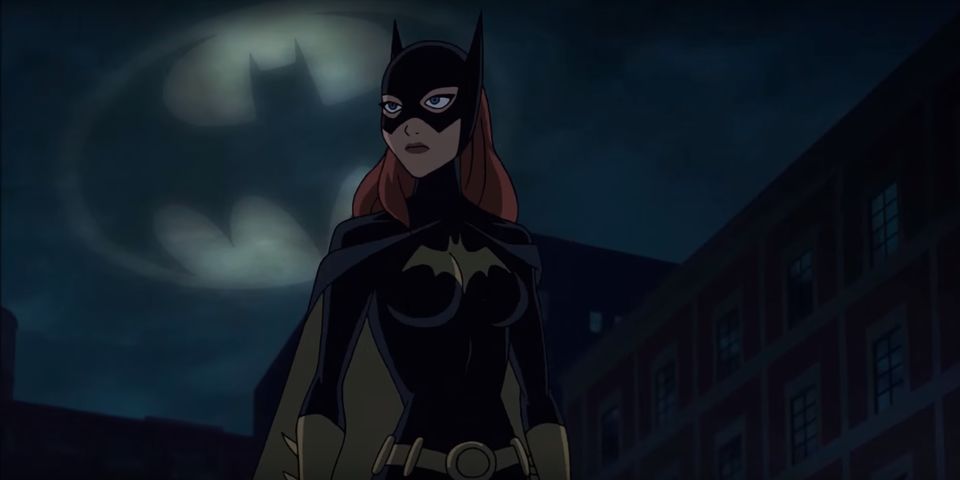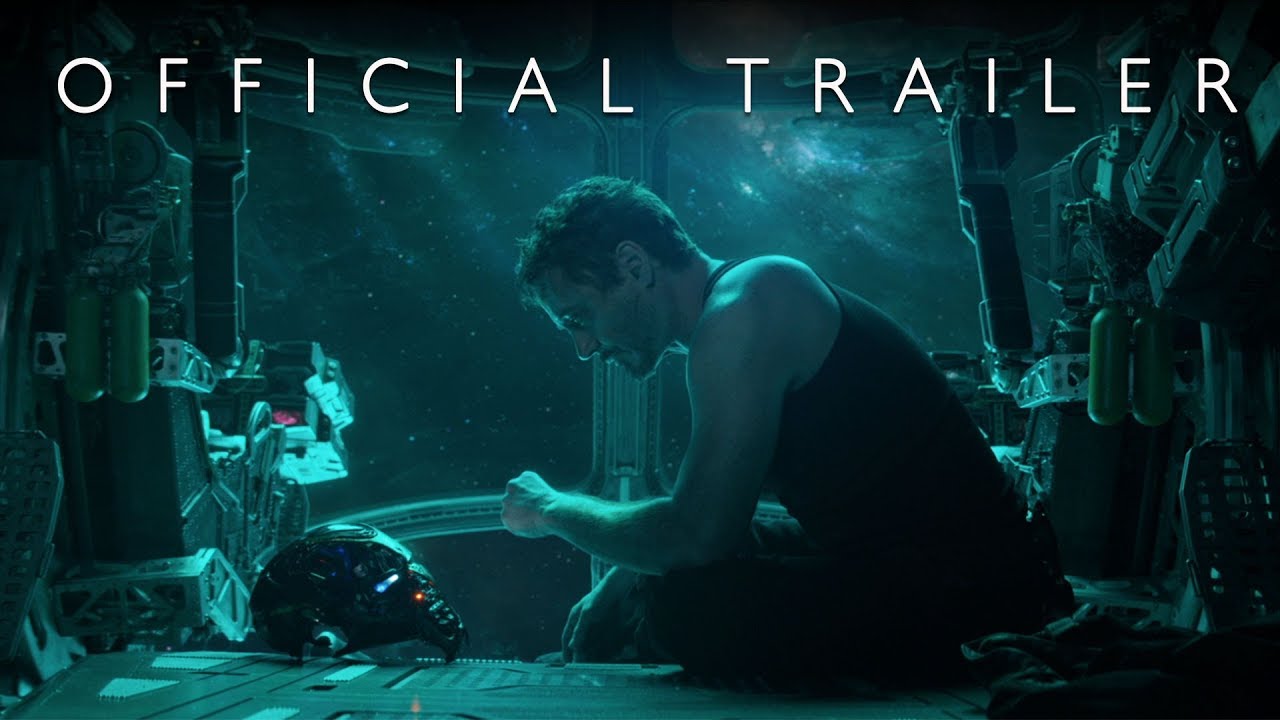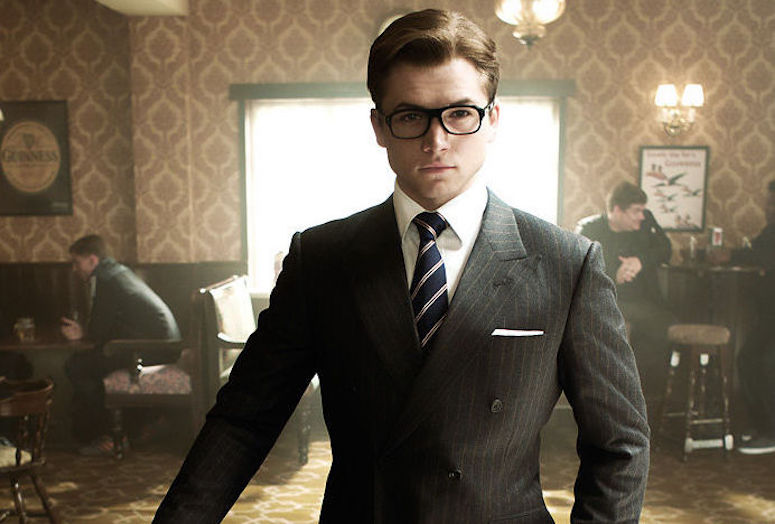Author: Nick Lauer
I think I said this months ago, but (I guess) I need to say it again…women are not demeaned in film!!! If the movie has women that appear as cheap sexual objects, it’s a strong bet that its crappy writing to blame, not misogyny. This is such misdirected hate. Where was all this hate when Katniss Everdeen was screaming her lungs off for a guy she, after a year of not talking to him between the first two movies and then him going missing and then being brainwashed in the last two, probably talked to in total for a couple of months. And it was mostly because she needed someone to rock her to sleep! Stop criticizing Batman: The Killing Joke for the way that Barbara Gordon is depicted.
Where are feminists when that happens?! Why is it that for Batman: The Killing Joke, the biggest complaint from fans is Barbara Gordon wanting to sleep with Batman? Keep in mind that this has been old news for years in the continuity of both the Batman/Batman Beyond shows along with the comics. Barbara Gordon does in fact have a relationship with Bruce Wayne.
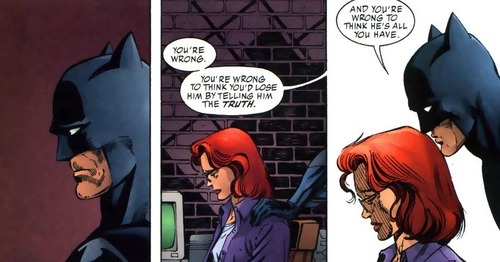
In fact, in a scene where Terry McGinnis first meets an elderly Barbara Gordon in Batman Beyond (oh and she’s now commissioner of the police) she tells him as much. A 20-something woman falling for a man who, I believe, is always roughly in his early to mid-30’s. This does not sound that irregular. Again, where was this crap when Jennifer Lawrence plays a sex addicted widow who manipulates a bipolar man, and that man (in his late 30’s) falls for her for no clear reason! Where is the outrage?! Yes, you can see I have a bit of a dislike for a particular actress, but she basically proves the ultimate point!
What is feminism in this day and age? Why is it that a woman can (under duress and mental instability) fall for men and men for them for no clear reason, but a well-defined relationship where no one is screwed up is bad?! Are we just comfortable with chaos? Do we now need chaos for things to mean something?
Screw Lawrence…(Not In That Way)
I’m sorry, I can’t help myself. JLaw is the perfect example of this. Batman: The Killing Joke premiered at the San Diego Comic-Con this weekend, right? There was a panel there, discussing the release of the film. Its a glorious platform for fans, press, and the guys who brought one of the most acclaimed Batman graphic novels to the big screen to have a round table discussion. Not to mention Mark Hamill and Kevin Conroy returning once again to voice Joker and Batman (respectively). Bruce Timm (one of the most beloved creative minds of the DC animated universe) co-directed it. It was the perfect trinity of creative minds! I got to see the film myself. It was beautiful! A perfect, well-crafted, well-paced story.
And what was the only complain from the panel? The first 30 [or so] minutes of the film are told from Barbara Gordon’s perspective, as she deals with Batman’s strict mentoring. He treats her like a protegé instead of a fellow crime fighter. Because she spends so much time with him (unlike most people), she develops feelings for him and displays it. This leads to them sleeping together on a rooftop. This hasn’t gone well with fans. One man asks the panel if they found her character change demeaning to the character of Barbara Gordon.

Others in the panel began to jump on-board with this idea. Now, unfortunately, I have to save my editor the horror of being very crass with these extreme lunatics, and explain why Barbara’s character change was not only justified…it was brilliant! A couple things first…
The “Comic Book-to-Film” Dilemma
Keep in mind, the popular storyline The Killing Joke in the comics is very short. A single comic book is 20-50 pages on average. The original graphic novel of The Killing Joke is actually 48 pages long! In other words, if it had been adapted as is (since frozen images on a page would amount to 5 seconds on-screen), the movie would have probably been 15 minutes long. This is the risk of translating comic books to film. That’s why Captain America: Civil War didn’t have 100’s of characters like the comic version of the Civil War storyline. It would have been too stuffed and we wouldn’t have gotten a well-structured narrative.
Film and comic books are very different. Alan Moore, author of The Killing Joke, once spoke about how he hates all the adaptations of his work. He says it’s because there is a way that the graphic novels play out that doesn’t translate well on-screen. This is why Christopher Nolan removed a lot of the more extreme elements of the Batman mythos when he made his Dark Knight trilogy. We didn’t get Ra’s Al Ghul literally rising from the dead or Bane having a drug that makes him 10 feet tall. On-screen it would have looked a little strange. As shown in a certain 1997 disaster…

From Cell Shading to Celluloid
My point is that film works very differently in how it plays out. You have to feel there is a lot of progression, whereas in a comic book it’s a very slow process. It takes issues upon issues and years and years of character development. Not to mention, comic books feature lots of characters through spin-off/branching installments from the main series. A single comic book is a snippet of a year-long story. That’s why in film you focus on a few characters, where comic books focus on dozens over years of development. In a film that is one-to-two hours long, you can fully develop those characters that have to be explained in that one single story. For Batman: The Killing Joke, although it was considered a one-shot the fallout of the story affected much of the comic books that came later including…
Barbara Gordon Becoming Oracle!
Barbara Gordon’s time as Batgirl was only the first step in her growth. The events of The Killing Joke eventually lead to her strapping herself into her wheelchair, and developing a persona who aids other superheroes behind-the-scenes. She leads her own team, known as the “Birds of Prey”. Batgirl becomes a Batman figure to other characters. This is the same woman who (in the comics) has a fling with Batman. Basically, you have a badass mentor who has a strong head on her shoulders, is interested in a man, and ends up being smarter than him. Feminists out there. That’s called winning.

However, character development isn’t as simple as “She’s this and now she’s this”. There has to be middle ground, that’s called the development part. Barbara’s changes in the film adaptation of The Killing Joke ends up being very significant to the overall story. Years of Barbara Gordon’s life as Batgirl are not present.
In the film, the writers have the issue of condensing a story from the comic books, and seating it into the film version so that those characters retain their emotional impact. When Batgirl was shot by Joker in the graphic novel, comic book readers had known her for years. So, for them it was brutal and painful. But the film adaptation isn’t just for comic book fans. It needs to be relevant to the casual viewer that is not familiar with Gordon’s story. So, the writers added in her history, her affection for Batman, and other things in her life.
One Bad Day…
Barbara’s accident is very crucial to what makes The Killing Joke so intense. People Batman love and care about are facing death! The Joker’s scheme in The Killing Joke is to point out to Batman that he is “one bad day” from being as crazy and demented as him. The Joker shoots her, not because she’s with Batman, but because she’s with her father Commissioner Gordon at the time, who he wants to kidnap. In the graphic novel, and the movie, Barbara is not only shot. She is stripped naked and the Joker forces Commissioner Gordon to look at pictures of her damaged, exposed body. All of this is to prove that he can make anyone like him by taking what they love and destroying it.
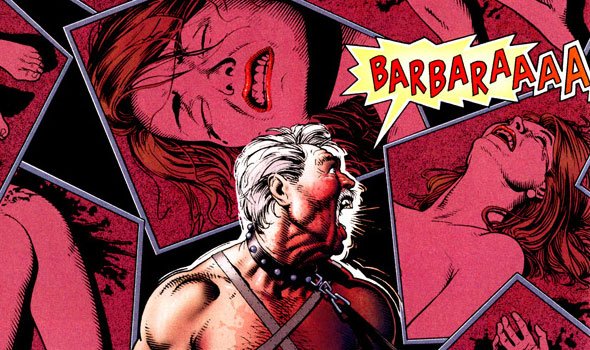
In the end, Batgirl was such a small part of the original graphic novel but, to comic book readers who had watched her for years, she was a large part of Batman’s story. The film writers knew they had to add to her story in the film for a general audience and, in doing so, used her to develop Batman’s mindset. In the original graphic novel, Batman refuses to hurt Joker and doesn’t want it to end with the inevitability they will one day fight to the death. However, with no former comic book stories that detail their journey, the film needs something to get Batman in that mindset.
Barbara Gordon Is the Key!
Using Barbara to tell the first 30 minutes of the story from her perspective was a stroke of genius for a couple reasons.
1. We observe Batman’s cold nature from the outside. She breaks through as he trains her and she demands him to treat her equally and not as a child. This leads to Batman confessing to her she doesn’t know what it feels like to fight evil for years to the point that he doesn’t care anymore. This leads to the scene that would appropriately need Barry White music to accompany it. It also breaks through Batman’s wall to make him care again and lead him to saying those things to the Joker that he doesn’t want to die. He makes a last plea to end their feud.

2. Batgirl needed to be developed in the film before her shooting happens, because her shooting is part of what propels the film into the climax of the story. Her shooting signifies how far Joker is willing to go right off the bat, and make you worry about what he’ll do next. By giving her more of a character, the climax has more strength. The horror is enhanced when Commissioner Gordon is, later, forced to look at pictures of her naked, damaged body as Joker mentally tortures him.
To Be Continued…
A comic book is one section of a larger story, and a film is a whole story. Because it takes years to make sequels on film, so you have to walk away knowing a story has been completely told to satsify audiences. This is why a lot of films that end in cliffhangers are never particularly well-received. For example, The Matrix Reloaded was really liked, except when it suddenly cuts to black after Neo goes into a coma. “To Be Continued…”. Three words (and sometimes three periods as well) that drive people nuts. They want a conclusion.
Barbara Gordon, in her “demeaning” rewrite, ends up being the linchpin that makes the film feel complete and not half-baked emotionally. You get to know her and then she’s shot point-blank in the gut, left paralyzed and Batman (having had his coldness warmed by her affection) leads to him wanting to help the Joker because he doesn’t want to die. He cares again because someone cared for him.
Was It Demeaning? No, It Wasn’t. Stop, Just Stop!
Not everything is going to have a warrior woman, but no woman should just be holding out for a man either (If Silver Linings Playbook was made for the real world, Bradley Cooper would have thrown a restraining order at her face!). Barbara Gordon develops feelings for someone while learning and fighting with him. She’s not hung up on him. She has a life. But she also likes a guy. You can do both! Keep in mind in that 30 minute epilogue, she kicks the butt of another guy who is sickly obsessing over her. Contrasting those two different relationships, you are given evidence IN THE FILM about the difference between an understandable attraction and a disturbing one.
Lesson of the Day: Feminazi’s Go Away
You’re not helping anyone, extremists! I can name a few women out there who met men at work that might be a little older. That’s your choice and many of you do it. So, condemning a woman (in a cartoon) for falling for a guy she literally faces life and death with is pretty hypocritical. And what do you get at the end of the story?

That is life boys and girls. We have crushes, we like people. Sometimes older, sometimes younger. Maybe we’re so hung up on our own needs, we forget we’re part of larger story, a larger narrative. Barbara Gordon was a lead-in to Batman and Joker’s story, but she was the reason it meant more! This is because someone we cared about lost a lot, and in turn, someone who Batman cared about lost a lot. She lost her legs and her dignity. Those first 30 minutes made the last 45 minutes mean more. Pleas try to be against a woman who becomes a computer genius by the end of the story. Try to call THAT sexist.

[display-posts posts_per_page=”5″ orderby=”title”]


